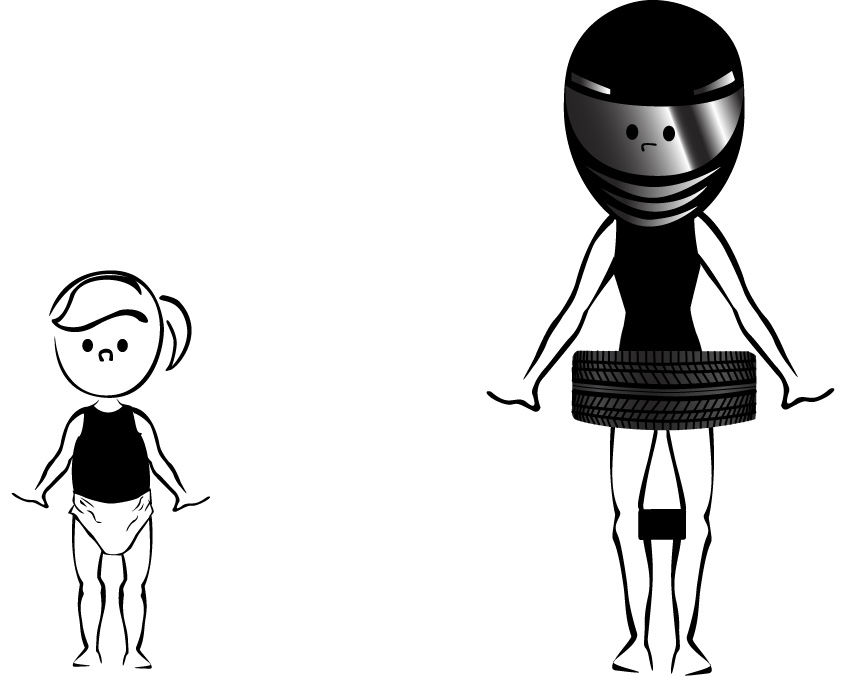(Introductory and beginner levels)
Consider your child’s body shape when completing preschool gymnastics lessons.

A child’s body shape, size, strength and flexibility pose physical limitations on how they move. Most children that are ages 18 months-3 years have a large heavy head, short weak arms, high center of gravity in the middle of their chest, large round tummy making it hard for them to bend. Legs are bent and wide apart, with small flat feet. If parents and coaches can visualize themselves in a small child’s body shape, they can understand limitations and restrictions of what the child can and cannot do.
Considerations of child’s shape for equipment and skill ability:
- Dynamic balance:
Children this age group have a very high center of gravity and weak core muscles making all balancing activities difficult. Parents should be reminded that tots are top heavy and unstable with most balancing and movement activities. - Hanging on bars:
It is easier for children to hold onto a small bar because of the size of their hands. It is difficult to hold on for a long period because they have weak arms. Inverted hangs and skin the cats are difficult because they have short arms and there is not enough space to allow their body to go through and underneath the bar. Parents and coaches must be ready to spot these skills as the children will usually let go of the bar as soon as their toes touch the bar. - Jumps:
Usually when tots jump off of heights they will naturally step off with one foot rather than jump off with two. Their perception of distance and height is not highly developed. It is important for parents to aid their children in dismounting or jumping off of any height above the child’s waist height. - Safety landing position:
Arms out in front, bend knees, stick feet and show your teeth.
Cue words: “jump on your feet, stick and show your teeth” when the skill is finished, stand tall and lift hands up in a “Tah Dah!” position. The reason why the children are asked to show their teeth is to stop children from biting their tongues and it also helps them keep their neck tight, controlling their head on landing. - Trampoline:
Children this age travel when jumping as they are top heavy and have limited jumping skills. Some children are at the first developmental stage of jumping, which is a one leg at a time hippety hop jump. Holding onto a rope makes it easier for this age group to achieve a two foot controlled jump. The rope also allows the shy child to be connected to their parent, while safely being spotted on the trampoline. Explain to parents it is unsafe for them to jump on the trampoline with their child as injuries are usually caused by being double bounced. - Walking on beam:
It is easier for the children to walk sideways on a balance beam at this age. It is difficult for children to walk forward or backwards on a line as there legs are wide apart. Walking activities should be practiced on wider surfaces.
For more lessons plans, visit Gymtastics GymTools Preschool gymnastics lesson plan package deals!

